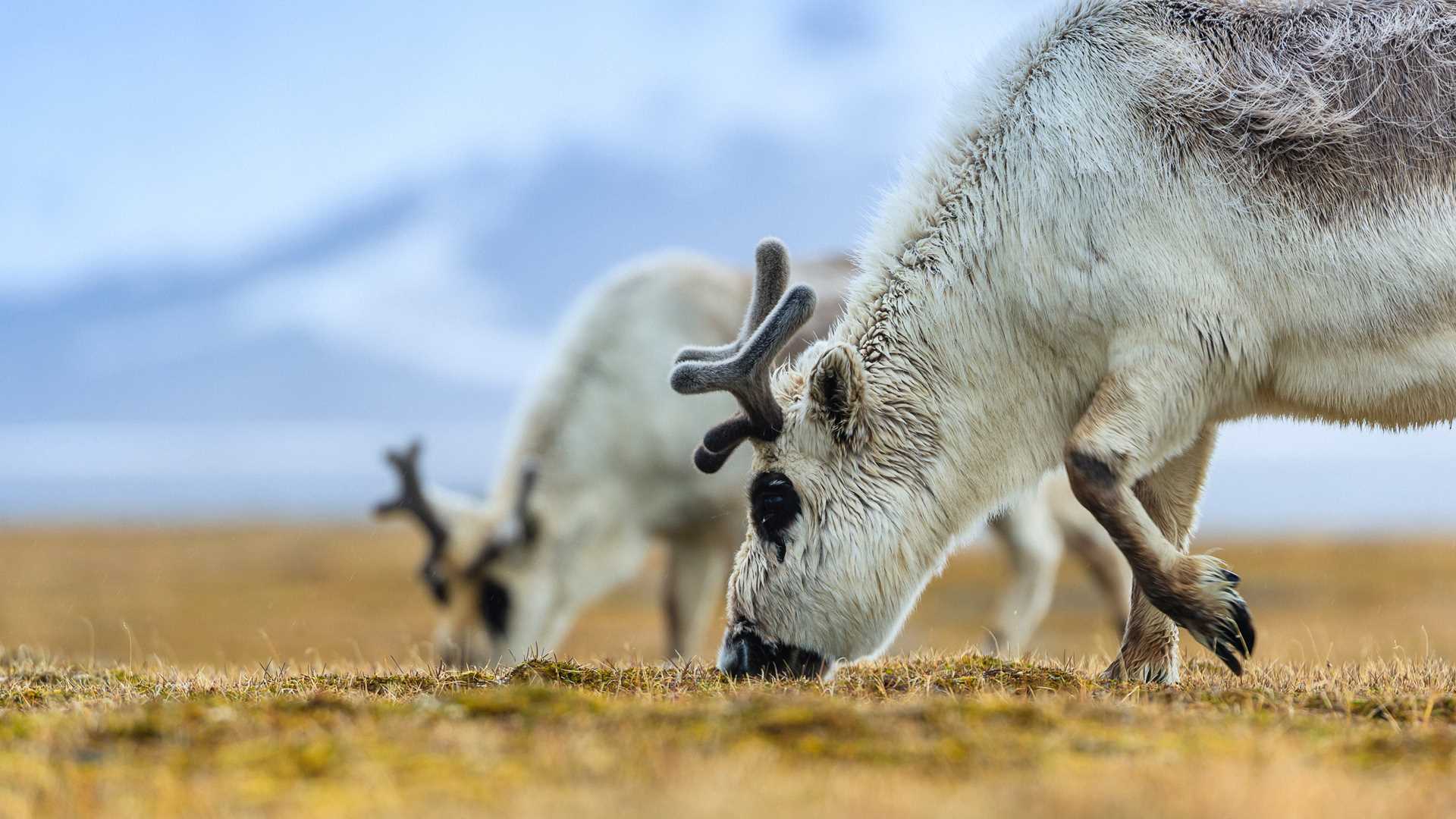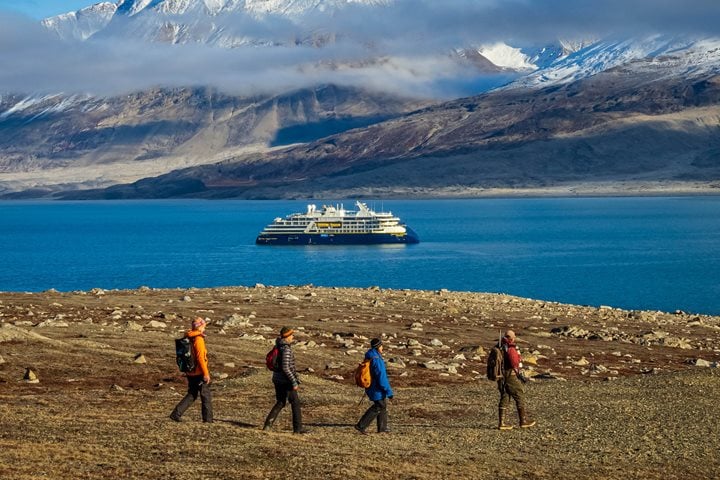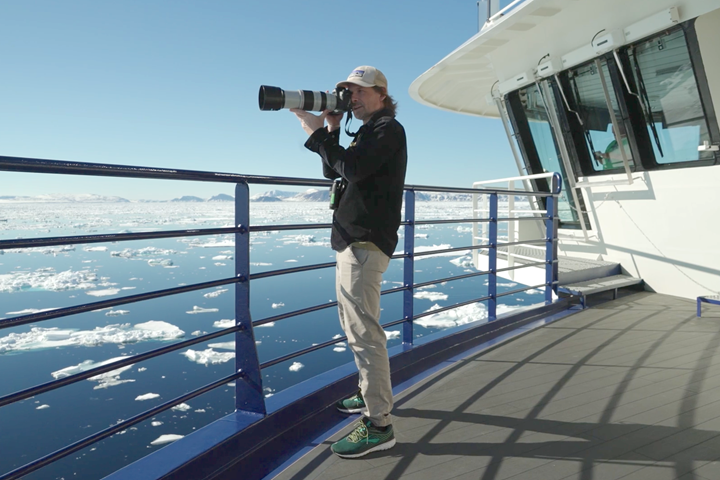Svalbard is a much more romantic name than its literal translation, “Cold Shores;” but with its position well in the Arctic Circle near the northernmost point of Greenland and 440 miles north of its motherland, Norway, cold it absolutely is. Get Inspired by Photos, Videos, Webinars, Stories, and Exclusive Offers. Sign Up
Comprised of five large islands and dozens of small ones, 60% of this vast archipelago is covered with glaciers and snow fields. Yet, thanks to the North Atlantic Current, plant life—including 150 species of wildflowers—surprisingly exists here, at a latitude farther north than anywhere else in the world.
The legendary frozen wilderness is also known for its abundance of reindeer which can be found roaming among massive ice sheets, snow-capped mountains, and deep fjords.
When Dutch explorer William Barents discovered the islands in 1594, he reported “leaves and grass and reindeer.” In warmer seasons, reindeer gorge on the leaves, grass, lichen, wildflowers, and other plant life so that when winter arrives they have enough fat in reserve to sustain them through months of sub-zero degree weather.
Endemic to Svalbard, these hearty animals have evolved to become uniquely adapted to year-round life in the Arctic. To reduce exposure to the elements, their bodies are shorter and stockier and their necks are smaller than other species of reindeer. Even after dropping a third of their body weight in the winter, they can thrive in the harshest conditions due to highly insulating fur made up of two layers: a soft, thick undercoat and a top coat of hollow, water-repellent guard hairs. That hollow hair also helps reindeer float, making them oddly great swimmers.
Although their noses don't glow red, they do have a special superpower: warming the incoming air reindeer breathe before it enters the lungs. They are also the only deer species where both sexes have antlers (likely because females use them to protect their food sources when pregnant). And reindeer are thought to be the only mammals that can see ultraviolet light. This unique trait helps them decipher many objects that can blend into the Arctic landscape, such as fur and urine.
All these factors have brought Svalbard’s reindeer back from near extinction from overhunting. Now they have no predators—not even the flying insects that plague reindeer in other parts of the world. Humans are greatly outnumbered on these islands: There are 2,500 people who live in Svalbard compared to 3,000 polar bears and 10,000 reindeer.
Guests on a hike get a prime view of Svalbard's friendly reindeer. Photo: Ralph Lee Hopkins
Like stray dogs in Mexico, cows in India, and chickens around the world, Svalbard’s reindeer roam unimpeded. Their lack of fear of humans allows guests aboard Lindblad-National Geographic Arctic expeditions to get comfortably close to these mythical creatures and come home with outstanding photos.
This report shared an experience from one of our landings on Svalbard’s Edgeøya Island: “A melt water stream had cut a terraced path through verdant tundra surrounded by ice-covered mountain peaks. Small groups of reindeer were grazing here and there on the rolling hills of the valley. A little group of Svalbard reindeer seemed curious and showed up very close to some of the hikers.” Another report noted that, “there were over 20 reindeer around the lake, and many Arctic animals like reindeer do not have natural enemies. That gave us great photos at a short distance.“
In the tranquil silence of this stunning archipelago at the top of the world, reindeer adapt and subsist in harmony with the elements, 650 miles from the North Pole. Lindblad is privileged to share the wonders of this very special, remote destination with our guests.
To witness reindeer in the wild, along with other iconic Arctic wildlife, join us on one of our many thrilling Arctic expeditions.




